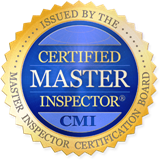

Certified Master Inspector
Providing Residential and Commercial Property Inspections for Muskoka
8 a.m. to 7 p.m., 7 Days a Week
Call 705 205 4663
DoneRight1@live.ca
8 a.m. to 7 p.m., 7 Days a Week
Call 705 205 4663
DoneRight1@live.ca


To test or not to test for mould, is that the question?
During many of the home, commercial and cottage inspections I conduct here in Orillia Gravenhurst and all throughout Muskoka I am often asked by my clients to “smell the air” as I go into the basement or the crawlspace. They will tell me they have smelt something on their prior visit that smells like a mouldy smell and can I please tell them if there is mould in there. I tell them that no one can tell the whole story unless a sample is submitted to a lab for proper testing. During my home, cottage, and commercial inspections, I do carry a simple test kit that can indicate the presence of a living biomass and experience in mould testing can tell me if it is most likely mould. But the whole story, what type of mould, whether it is growing or dormant, what affect it may have on people or structures, and what needs to be done to treat it can only be determined after I take a sample and submit it to a certified lab for testing.
The type or toxicity of mould cannot be determined from it’s appearance. Colour is not an indicator as moulds can be any colour depending largely on the food source they are living on. The dreaded ”Black mould” everyone has heard about can, after testing, be revealed to be a relativity benign non threatening type of mould while another that appears green and familiar from the moulds commonly found on rocks and trees outside, can prove to be highly toxic or even disease carrying.
Whenever I come across a damp musty smelling basement or crawlspace I first look for the two main conditions that encourage mould growth. Is there a source of moisture present? If there is visible water or a humid environment that indicates to me that the number one requirement for growth is present. Mould can grow over a wide range of temperatures but it must have an environment that is above 20 percent moisture for growth. Some moulds are capable of growing ,ie feeding, on dry material if they can extend their root like structures to a source of moisture. These are the whiteish trails often seen extended along the face of logs, old stored lumber, or sometimes on joists and beams in crawlspaces and damp basements.
The second most important condition for growth of course is food and for humans unfortunately moulds have taken to feeding to on just about any thing you can imagine. From asphalt to steel, from wood and paper cellulose fibre to the nylon and rayon in the carpet it seems nothing is safe. So that leads to just one conclusion: To control mould growth and its presence in large amounts in your home you must control moisture in the home.
If you smell a dampish smell that at least is an indication of moisture present in the air, and that is an indicator that the number one condition for mould growth is present. But, that does not mean that above normal amounts of mould are present. Whitish. black or green patches on walls joists or other areas in the home may be mould but what type, if it is actively growing, and its toxicity level can only be determined after submitting a sample to the lab. So when a home buyer in the Orillia, Gravenhurst, and Muskoka areas asks me about possible mould I tell them the real question is do you want the whole story? If you want the whole story Testing is the only way.